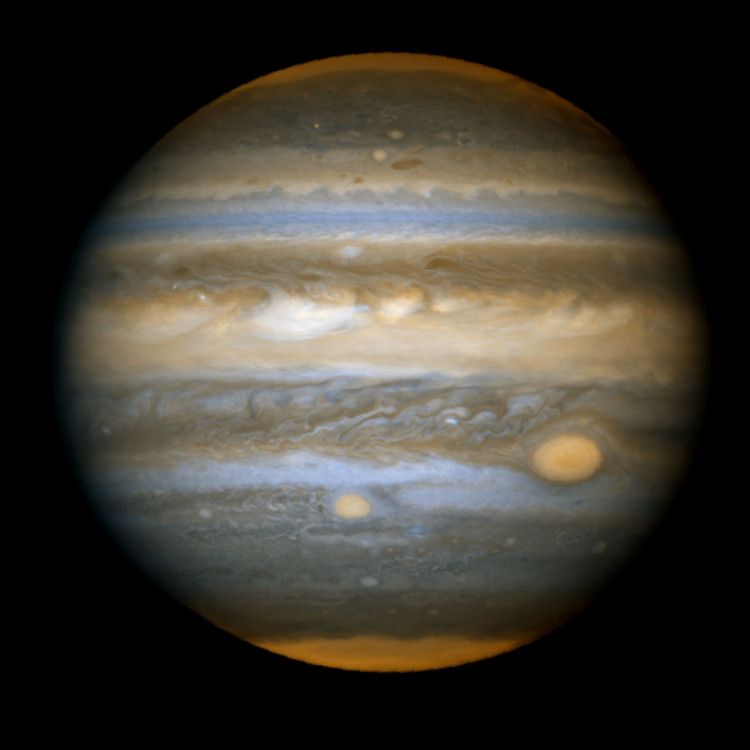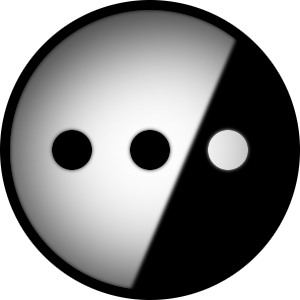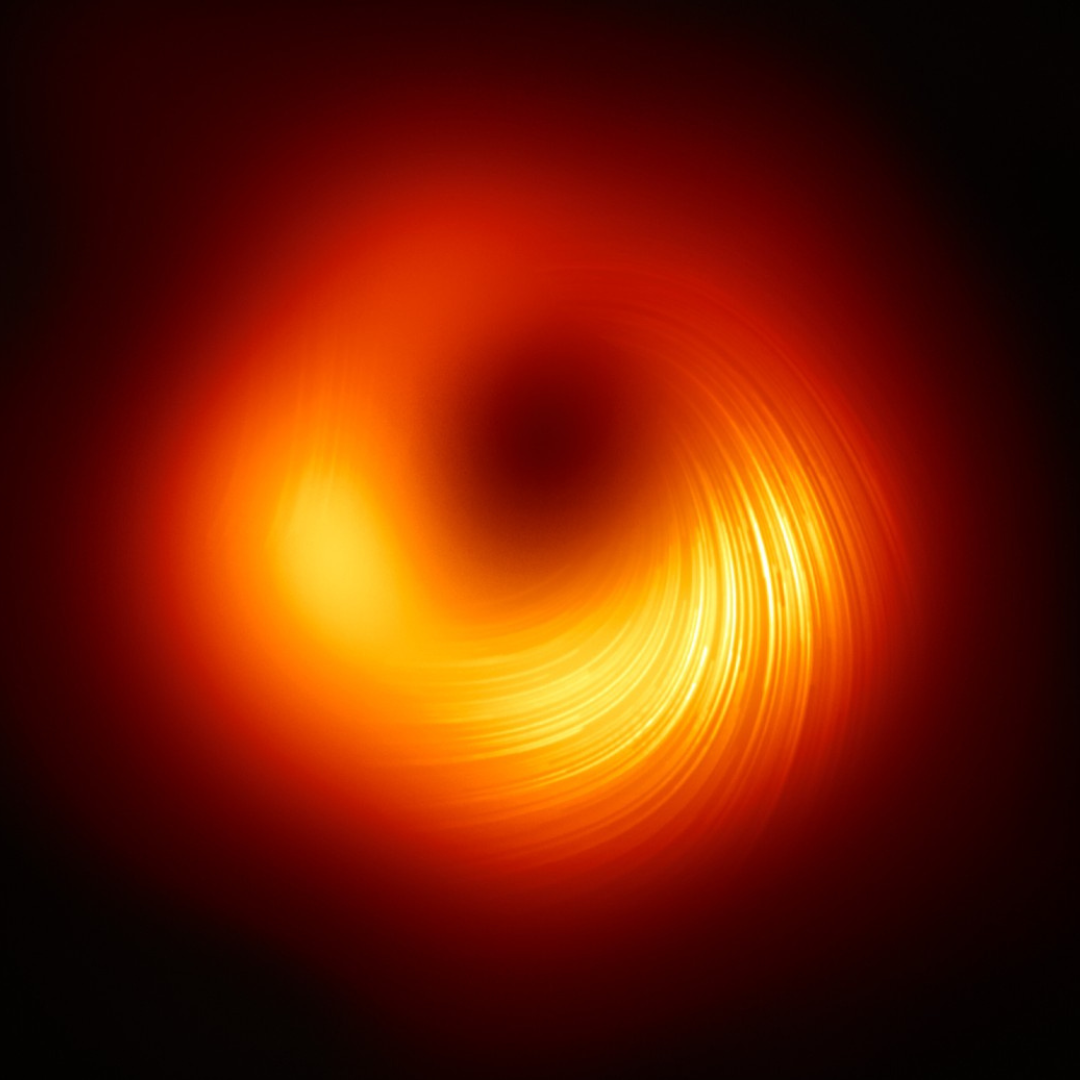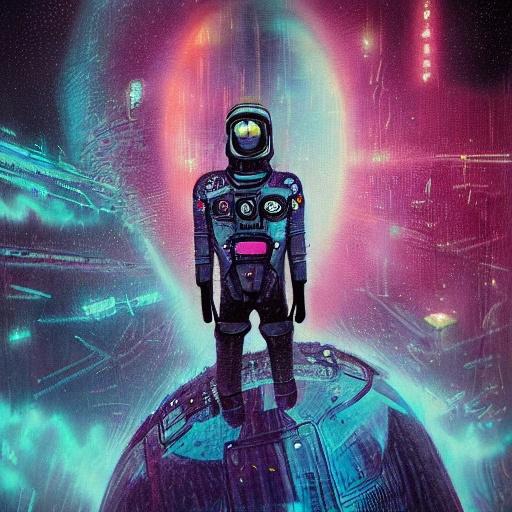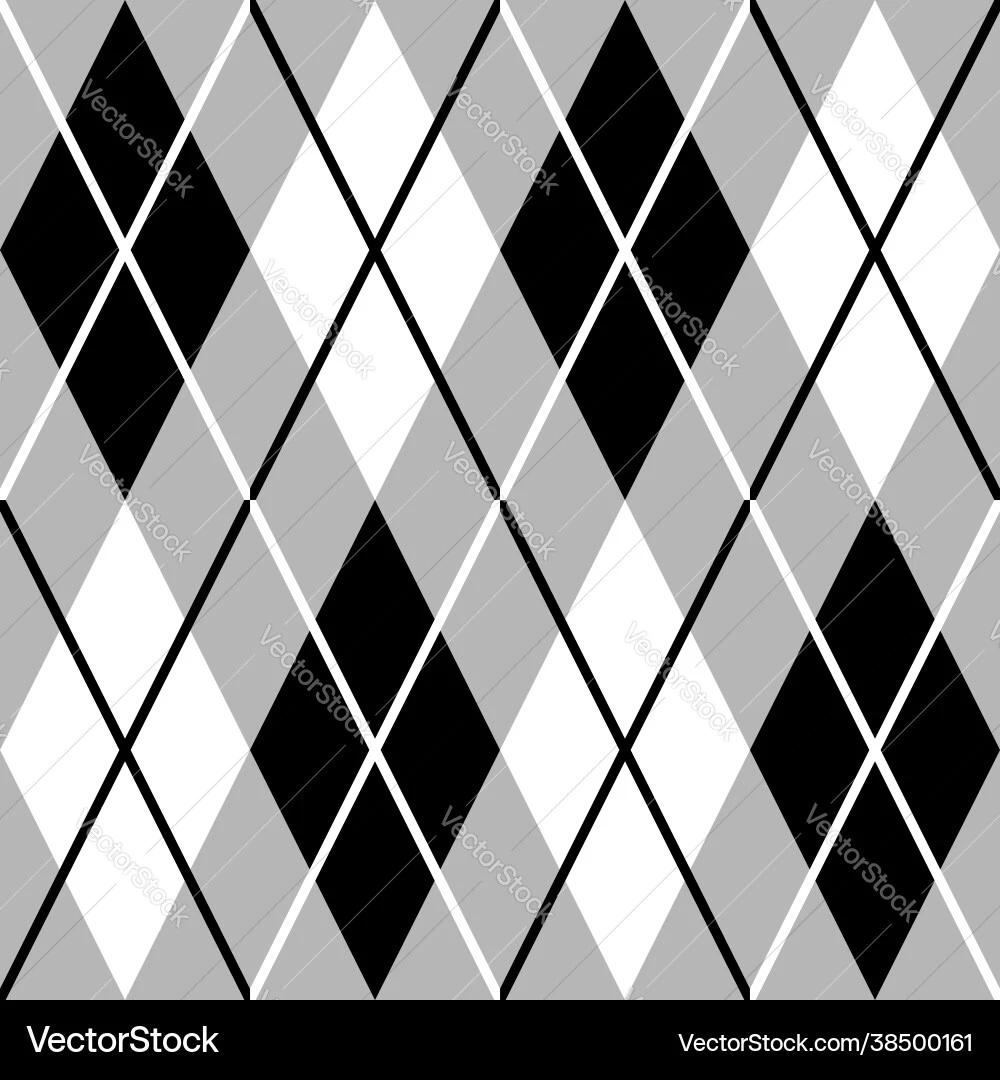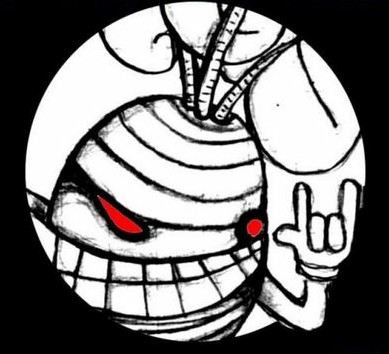Why’s it blue?
This is a really good question. I suspect the color in the image has been enhanced. I’ve been trying to find a scientific reason that the clouds could appear blue, but haven’t found anything conclusive.
However, I did find a NASA page with raw images of Jupiter.
Here’s a raw image:
Here’s an image that’s been color-enhanced:
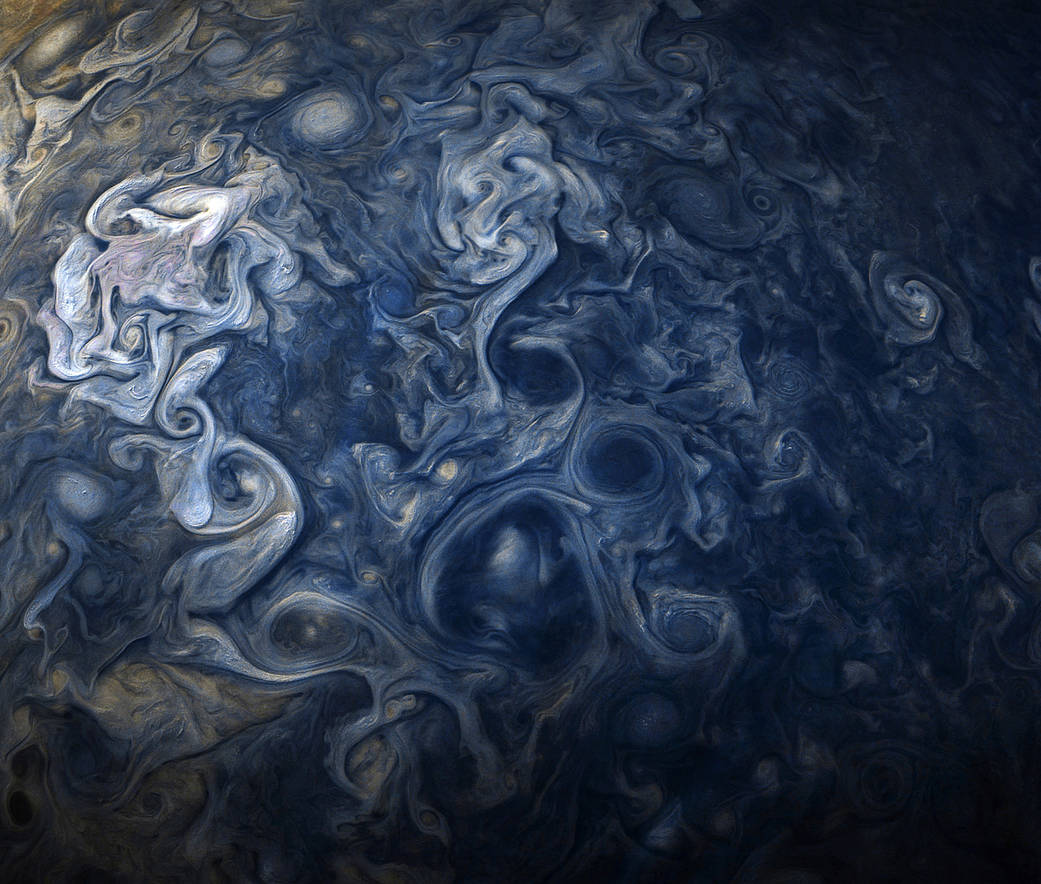
It’s not uncommon for space images to be color-enhanced. On the one hand, it may feel less authentic. On the other hand, the visible light levels in space may be insufficient for our expectations and uses anyway. Although I don’t know the origin of the picture at the top of this page, I know that it’s common practice for space photos to be enhanced. In fact they’re often taken in non-visible spectrums and fully converted to something humans can see and comprehend. Ever see detailed, colorful photos of galaxies? They were probably taken in X-ray and colorized in processing. Cool as it would be, you wouldn’t see those colors in real life.
It’s not uncommon for space images to be color-enhanced. On the one hand, it may feel less authentic. On the other hand, the visible light levels in space may be insufficient for our expectations and uses anyway.
Another thing to consider is that human perception of color in celestial objects is often just wrong, so enhancing the color of certain objects is more true than what we often see ourselves.
The sun is the same color all the time: white, consisting of a broad spectrum of all the wavelengths in the visible light range. But our atmosphere scatters the different wavelengths differently, so we see a blue sky and we see yellow, orange, and red sunsets. The atmospheric effects are happening all the time, with all the other light that happens to hit our planet, like the moon seeming to change color while reflecting the same white sunlight.
The stars in the sky are all sorts of different colors, but appear white to us, because our color-blind rods are much more sensitive than our color-sensitive cones, and the dimness of starlight just all looks like faint white lights regardless of whether the star happens to be red, yellow, blue, or white.
Meanwhile, relativistic effects might actually shift wavelengths and resolution, too, whether we’re talking about redshift or gravitational lensing, and asking what the “true” image is supposed to be.
So when we take a long exposure of something in space, that itself may represent something that the human eye can’t see. Using colors to represent the different wavelengths actually present may also require adjustment of what physical filters are used on the capture, and how the actual sensor is configured to account for different wavelengths (including potentially wavelengths not within the visible spectrum), and to account for literal noise captured by the sensor.
Astrophotography needs to make choices about how to translate sensor data to an actual human-visible image displayed on a screen with its own limited color space of what its pixels can display, or printed on paper with its own limited color space of what inks are available for printing.
The junocam page has raw shots from the actual device: https://www.msss.com/all_projects/junocam.php
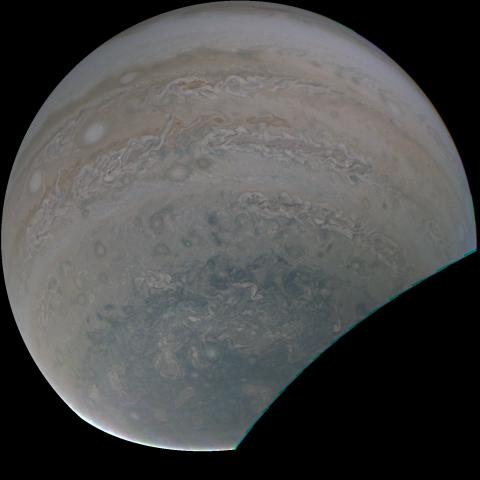
Caption of another:
Multiple images taken with the JunoCam instrument on three separate orbits were combined to show all areas in daylight, enhanced color, and stereographic projection.
In other words, the images you see are heavily processed composites…
Dare I say, “AI enhanced,” as they sometimes do use ML algorithms for astronomy. Though ones designed for scientific usefulness, of course, and mostly for pattern identification in bulk data AFAIK.
I believe the image is from one of the poles, rather than the side view we usually see.
Slightly adjusted desktop background

I can practically hear the Cortex Command theme when it’s portrayed like this
Jokes aside, damn thatssa a pretty planet
Peter?
“girls go to college to get more knowledge, boys go to Jupiter to get more stupider”
Kids say this to each other
Thanks ! Never heard it before
Thanks. The rhyme doesn’t really make sense though, right? Or am I missing something?
College rhymes with knowledge.
Stupider rhymes with Jupiter.
You know it’s a rhyme, so you got that part.
It’s an insult chant school girls use against boys. There’s nothing more to it than that.
Some of us went to Mars, to get candy bars.
And I went to Venus, to get more…
Genius.
fabulous !! you got more fabulous
No, you.
Sexyy photo
You’re amazing
Thank you.
It used to be called Christianpiter.
Isn’t that artificially colored?
Ya, but I rather think about it as an ‘enhanced spectrum’ image. The structures you see are all real and similarly coloured, it’s just enhanced

Ahh, yes. Crank the saturation, crush the shadows, and blast the highlights.
Jupiter’s gonna have a bomb tinder profile now
Or Planets Only
Pluto:…
Almost all gas giant images are
Yeah. Neptune’s a dull grey.
The famous Jupiter one isn’t.
Not quite. It’s based on real wavelenths detected, but they might’ve been arificially assigned colours (although I think the images this is based on sort of correspond to human perception). But the colours are massively adjusted and contrast increased way past the point I would consider reasonable.
These images are mindblowing. Bring me back down to Earth? Do you have a favorite image with reasonable coloring and contrast?
Stary night vibes
That looks like a lot of storms
Why is it so swirly?
the storms, and different chemical/compositions im guessing.
There are jet winds circling around Jupiter westwards and ones that are circling the other way, which creates turbulence, and there are ginormous thunderstorms as well
Storms
Solid reference. 10/10
I don’t get it, do you mind explaining?
It’s a thing kids say to taunt each other, “girls go to college to get more knowledge, boys go to Jupiter, to get more stupider”.
Now I’ve got a hankering for pamplemousse 😄
Ah, got it, thank you!
What does that… mean? Is it a jab about college attendance demographics skewing towards women?
Kids don’t know about college demographics. It’s a dumb thing kids say to tease each other. Like 7 year old kids. It just means boys are stupid.
Yeah one of the
Moody bluessomeone posted with the girls playing jump rope made it clickEDIT oops I meant “comic.” I got distracted by the Moody Blues playing on the radio.
The thought of elementary school girls clowning on boys by pointing out college attendance demographics is precious though.
I’m no scientist, butt I believe that is an image of Jupiter’s Uranus
I want to hang a picture of it in my house so when guests compliment me on it I can say “Oh you like it? Me too. It’s a picture of Uranus”
Mmnm I bet there’s chocolate nugat and bipedal organisms in there
deleted by creator



